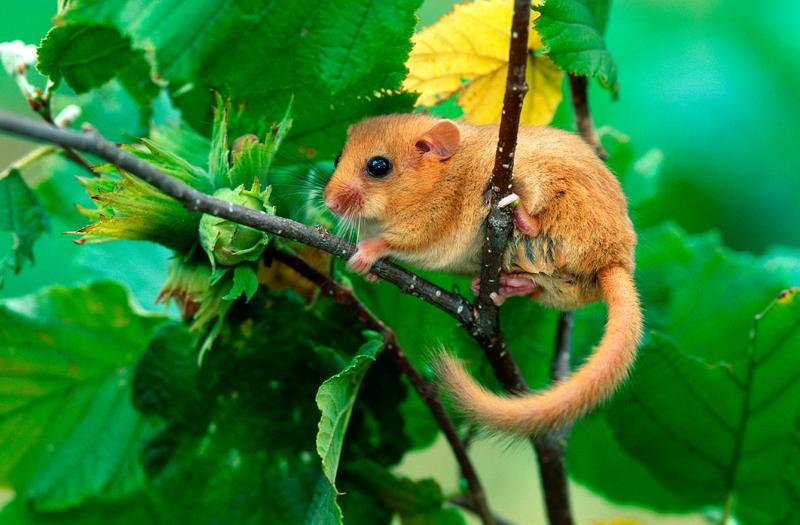Previously unknown dormouse habitat identified
Bayreuth researchers have shown for the first time that the dormouse, which is strictly protected in Germany, not only uses woody structures as a habitat, but also reed beds.
---
What for?
The dormouse has become particularly rare due to the destruction of its habitats and is strictly protected under Annex IV of the European Habitats Directive. Until now, it was assumed that the hazel dormouse (Muscardinus avellanarius), which is native to Germany, mainly uses woody structures for resting, foraging and nesting. During construction work, for example, the presence of the dormouse has so far only been checked in forest habitats and hedgerows. Evidence that it uses reed beds is therefore of great importance for nature conservation and the adaptation of conservation measures.
---
The destruction of habitats threatens many wild animals. The dormouse, which is usually described as a strictly arboreal species, i.e. only found in forests and wooded areas, is therefore a strictly protected species. Researchers from Bayreuth have now been able to show for the first time that dormice use reed beds as a habitat. The study was recently published in the Journal of Vertebrate Biology and was part of geoecology student Raja Wipfler's Master's thesis.
Previous studies had already found initial evidence of dormice in reed beds. “We followed up on these indications in the study using telemetric investigations,” says Prof. Dr. Manuel Steinbauer from the Department of Sports Ecology, who supervised the work. To this end, eight dormice were caught in the Regnitz Valley south of Bamberg and each fitted with a radio transmitter. They were then released into their natural habitat, where reed beds and woody structures are located in close proximity to each other. Wipfler tracked the mice for at least three nights in order to monitor the whereabouts of the nocturnal animals.
The researchers found that the dormice used reeds and the adjacent woodland in roughly equal proportions: At night, 41.1 % of the measuring points were in reeds, 50.7 % in woody vegetation and 8.2 % in other vegetation. A closer look at the data revealed preferences of the observed mice: six of the eight dormice used the reeds and the woody vegetation. In contrast, one mouse used only the reeds and another only the woodland as its habitat. It was also shown that the dormice not only stay in the reeds during their active phases at night, but also use this habitat to sleep during the day. The researchers also found a dormouse nest in the reeds.
Wipfler, Steinbauer and Christian Strätz from the Bayreuth Office for Ecological Studies named protection from predators as one of the reasons for using reeds. Reeds could also play a role as a habitat for insects, which are a food source for dormice, and as nesting material. Dormice could also move into the reeds to avoid competition for food and nesting sites with the larger and stronger yellow-necked mice (Apodemus flavicollis) and wood mice (Apodemus sylvaticus).
The fieldwork for the study was carried out in spring and summer 2022, after Christian Strätz , Raja Wipfler and Dr. Elisabeth Obermeier from the University of Bayreuth's Botanical Garden had found initial evidence of dormice in reed beds in 2019 using nesting tubes they had developed themselves.
Wissenschaftlicher Ansprechpartner:
Prof. Dr. Manuel Steinbauer
Chair of Sports Ecology
Phone: +49 (0) 921 / 55-5834
E-Mail: manuel.steinbauer@uni-bayreuth.de
Originalpublikation:
Hazel dormice use reed beds for nocturnal activity and daytime resting. Raja Wipfler, Christian Strätz, Manuel Steinbauer. Journal of Vertebrate Biology, 73(23118):23118.1-9 (2024)
DOI: https://doi.org/10.25225/jvb.23118
Die semantisch ähnlichsten Pressemitteilungen im idw


